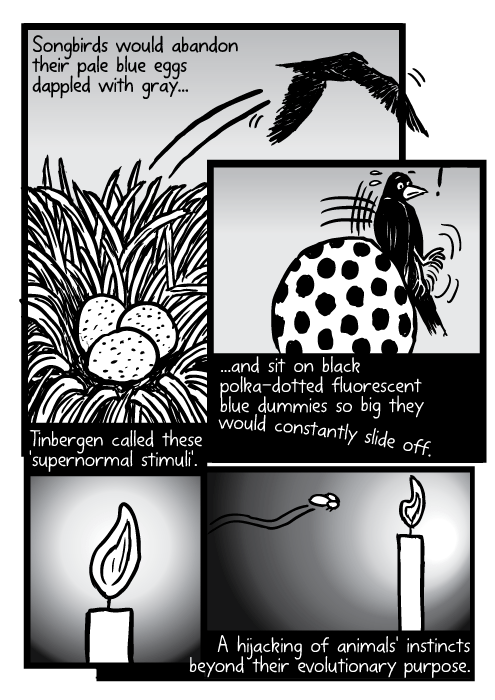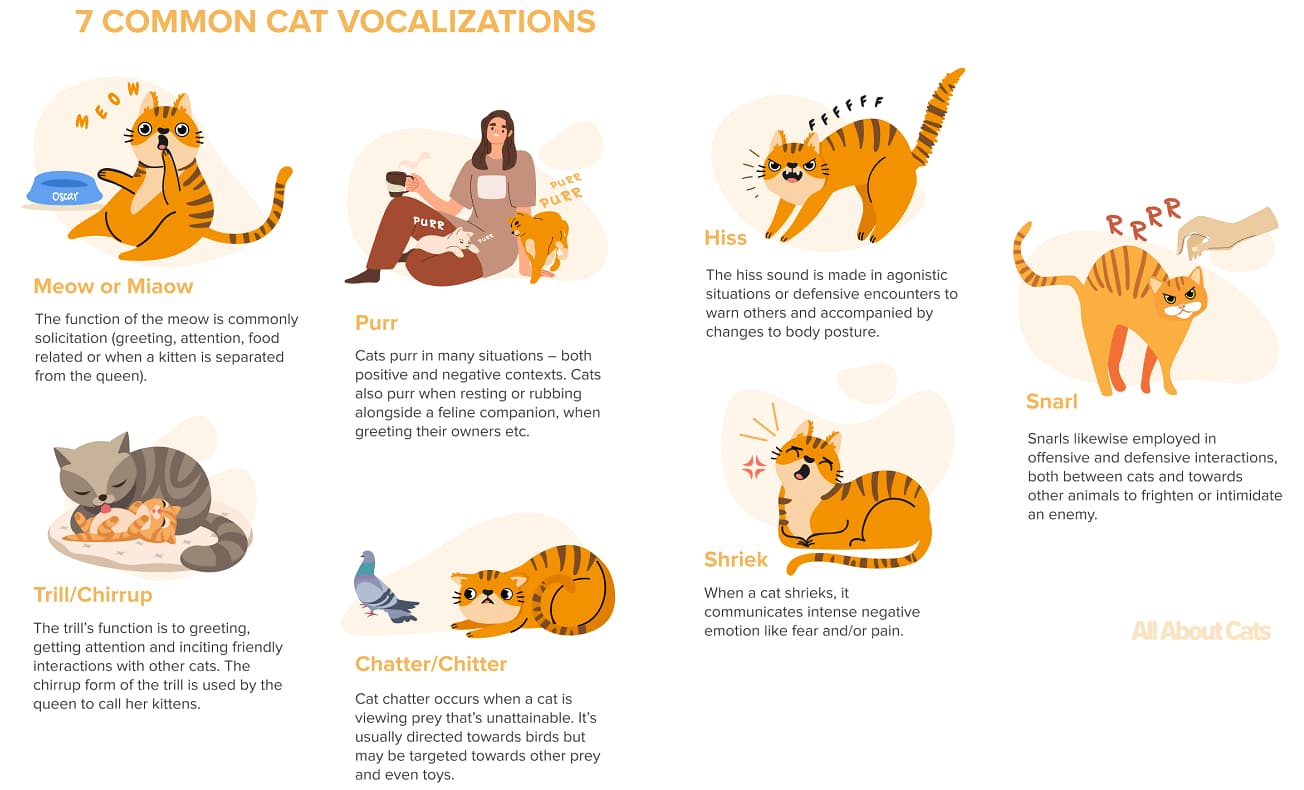Nowadays, more and more people keep cats as their pets. But why is petting these lazy furry warm hairballs so comforting for humans? And why did humans’ ancestors choose them to pet? According to Deirdre Barrett, a Ph.D. in Harvard Medical School and the Past President of the American Psychological Association’s Div. 30, The Society for Psychological Hypnosis.[1], the wire-puller might be a phenomenon called supernormal stimulus (or supernormal stimuli).
What is supernormal stimulus?
It is a kind of special (usually artificial) stimuli that can trigger an instinctual response more powerfully than a natural stimuli would. To put it simply, animals are sensitive with certain features. The more obvious these features are, the stronger response these features set off.
 How supernormal stimulus effects songbirds.
How supernormal stimulus effects songbirds.
Cats Vs. Human Babies
While cats and human babies are different in many ways, the two are similar in terms of their facial appearance and behavior.
Since about 10,000 years ago, as a research published in Scientific American[2] shows, the ancestors of modern cats have already shared some facial characteristics with human babies. Ancient cats might evolve big flat round faces and huge sparkling eyes for a better hunting sight. They also got small noses to make sniffing preys easier. Then, they met humans, whose babies looked similar with the cats, instantly activated humans’ instinct of taking care of babies. With the help of the superstimuli, cats started staying with humans and evolving increasingly baby-like.
Broadened eye sight and wet nose of cats.
On the other hand, cats and human babies are similar because of their behavior. Babies cries at a certain frequency, which would effectively attract their parents. Likewise, cats usually meow at the same frequency when wanting to get their owner’s attention. Surprisingly, when a new baby arrives a family, some cats may meow more in order to express the jealousy they feel. These are probably the results of evolution and adaptation.
 Seven kinds of cat vocalizations.
Seven kinds of cat vocalizations.
What does supernormal stimulus do in daily life?
So far, supernormal stimulus plays an important role in feline-human relationship. In fact, supernormal stimulus takes part in your life far more commonly these years. Things including well-designed eye-catching advertisements, dazzling TV programs, junk food full of salt, oil and sugar, etc. are all constantly provoking your brains, gradually causing strong impact. It is argued that the overuse of superstimuli may lead to entertainment addiction, especially in TV programs, computer games, shopping promotion and so on.
Fred shows Harry, whom he views as a real man, a scantily clad centerfold:
“Like that, Harry?” he asked.
“Like what?”
“The girl there.”
“That’s not a girl. That’s a piece of paper.”
“Looks like a girl to me.” Fred Rosewater leered.
“Then you’re easily fooled,” said Harry. (Vonnegut,1965)
-God Bless You, Mr. Rosewater
Moreover, as the stimuli continues, it will start to become weaker, so people will need a more powerful hit to feel “entertained”. Now, drown in the ocean of millions of short videos and various of phone games, people are able to get instantly accessible comfort. Even during a small break, their attention can be tightly drawn to that world full of neon lights.
 The world of neon lights, a place where you can easily lose yourself.
The world of neon lights, a place where you can easily lose yourself.
Also, supernormal stimulus can make neuron system seriously under tension, but not muscular system. “Eyes remained focused, the body is still and directed toward the set, but learning and memory drop to lower levels than when not orienting.” said Rothschild, a psychology researcher, and his/her colleagues.
“You are alone in the dark, staring at a plastic box. This is like a science fiction horror story…”(Whitedot.org, 1996)
It is still creepy and tragic even if you are not alone.
At the moment, you may want to turn off the glowing screen in front of your face at once. Despite in the most of time you have to keep them on in order to live in today’s information society, it is indeed a good idea to move your eyeballs, focus on other things like your family, friends, etc. The sound of meow from behind, which draws your attention, means that you need a break, too. In all, just let your brain rest.
So, next time when you fondle your cat, you may know better about why and how you are so deeply effected by what you see everyday.
References
[1]: Deirdre Barrett. “Supernormal Stimuli in the Media.” Evolution and the Media. Edited by Jerome Barkow. Oxford University Press, Jan. 2015. dx.doi.org/10.1007/978-3-319-16999-6_94-1.
[2]: Carlos A Driscoll, Juliet Clutton-Brock J, Andrew C Kitchener, Stephen J. O'Brien S J. “The Taming of the Cat.” Scientific American, Jun. 2009. dx.doi.org/10.1038/scientificamerican0609-68.



